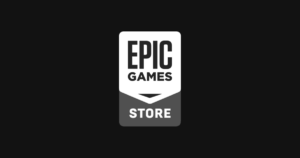Guest Post – The Plagues of AAA Game Design

As gamers, it’s easy to lambast developers when games don’t meet our expectations. Fable and Peter Molyneux, for example, were well deserving of criticism after Fable’s mechanics did not live up to Molyneux’s wild claims.
However, we must also take into account that often, game developers really do sometimes face insurmountable hurdles that plague game development. These are hurdles that go beyond budget restrictions, but external influences that can shape the game itself.
Examples of Outside Influence on Game Design
- ESRB Ratings: For a long time, developers tried their best to aim for a “T” (Teen) rating. This was to boost sales, as parents would surely not purchase a “M” (Mature) game for their children. It wasn’t until around 2005 that video games started using more “colorful language”, completely uncensored.
- Physical Retailers: As an extension of the above, physical retailers often had an influence on game design, by refusing to carry “AO” (Adults Only) titles, nor will Nintendo, Sony, or Microsoft allow official AO releases on their consoles.
- Country Restrictions: Many countries have much tighter restrictions on media than the U.S., and developers need to mind these regulations to reach a global audience. Germany, for example, is notable for requiring “censored” versions of violent games, and even digital distributions of titles (as via Steam) are different versions to German players.
- Real Life Brands: Sponsors can play an important part in development funding, and sponsors can just as easily pull their funding if they decide the game’s contents would be harmful to their products. It’s worth mentioning that for a long time, car companies would not allow their models to display physical damage in gameplay.
- Engine Licensing and Publisher Demands: For smaller game companies who license game engines, or work under the umbrella of a larger publisher, they may find the fine-print sometimes unbearable. Troika Games, for example, went under shortly after developing Vampire the Masquerade: Bloodlines, which used an early version of the Source engine. However, Troika Games was contractually disallowed from releasing the game before Valve released Half-Life 2. They were also pressured to wrap up the game’s development by their publisher Activision, thus putting the final nail in Troika Game’s coffin.
As video games are often compared to Hollywood films for their entertainment, so must their production be compared to Hollywood as well. It takes more than a script and a director to produce a blockbuster film – it requires sponsor funding, dealings, and skirting the line of what cinemas will agree to show.
The Hurdles of Alternative Funding for Game Development
This article isn’t meant to take blame away from game developers over-hyped their product, but an insight into how a developer’s vision can be quickly burst like a balloon. However, with digital distribution and crowdfunding becoming more easily accessible to startup developers, creating their vision becomes easier as well.
However, crowdfunding campaigns typically do not raise the type of funding it takes to develop an AAA title unless there’s a powerful brand behind the campaign. Star Citizen, for example, raised over $145 million. Star Citizen’s funding, while miraculous, is an exception to the rule, as many other hopefuls crowdfund campaigns for video game development have crashed and burned.
Some indie developers are turning their attention away from trying to design massive, innovative worlds, and being contented with much simpler games. There is money to be made in developing addicting little HTML5 / Io games, such as Slither.Io and Bonk.Io – extremely simple, low-resource games that have earned their developers hundreds of thousands of dollars in monthly revenue. With these kind of success stories, we may be seeing alternative paths to game funding being opened up for indie developers.
At the end of the day, gamers should remember to unleash their righteous fury on developers truly deserving scathing criticism – the hype artists who fail to deliver, the sequential first-person-shooters that are barely innovative, etcetera. But gamers should also remember to save some of that righteous fury for the hurdles that well-intentioned game developers face.






